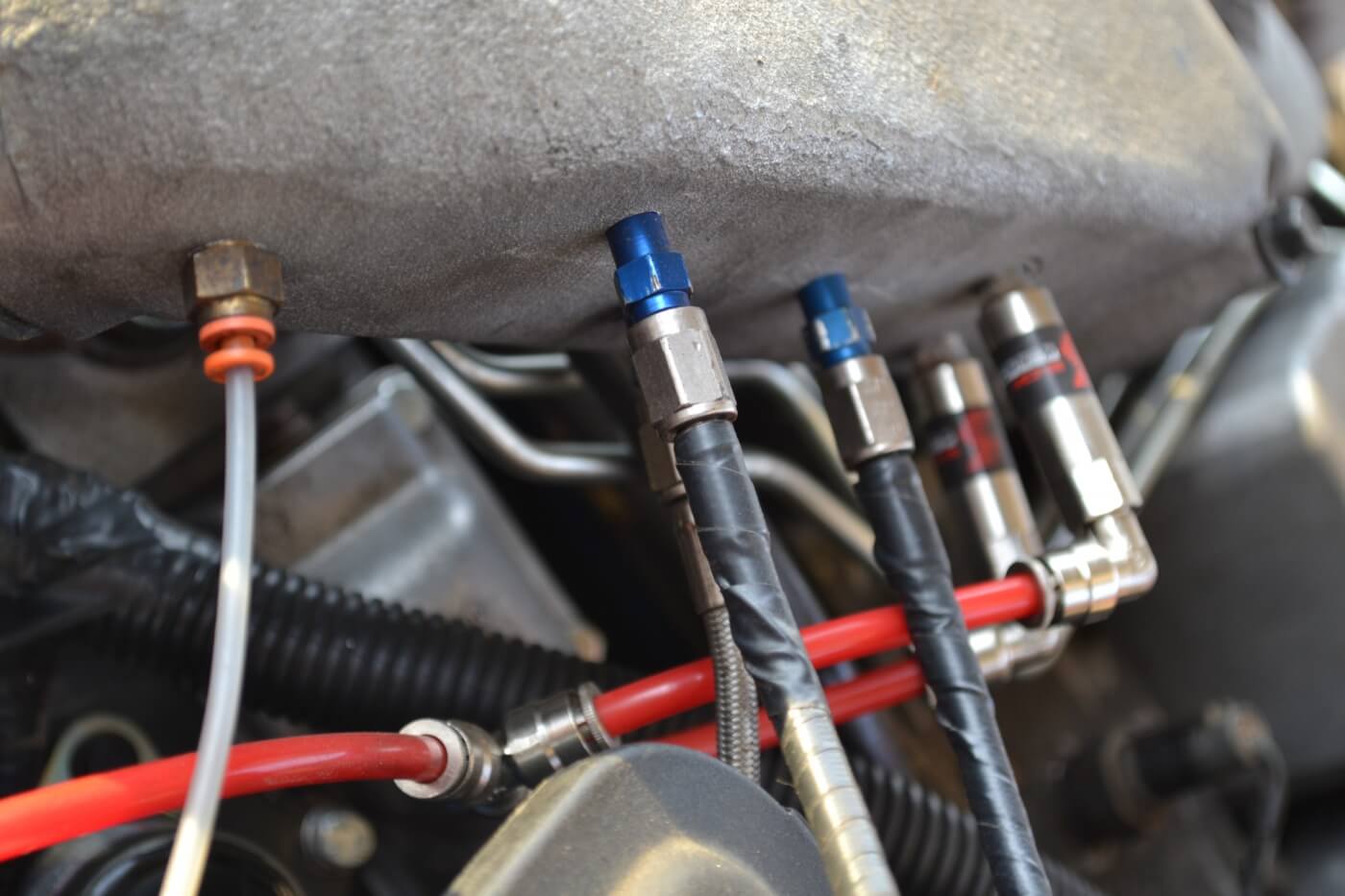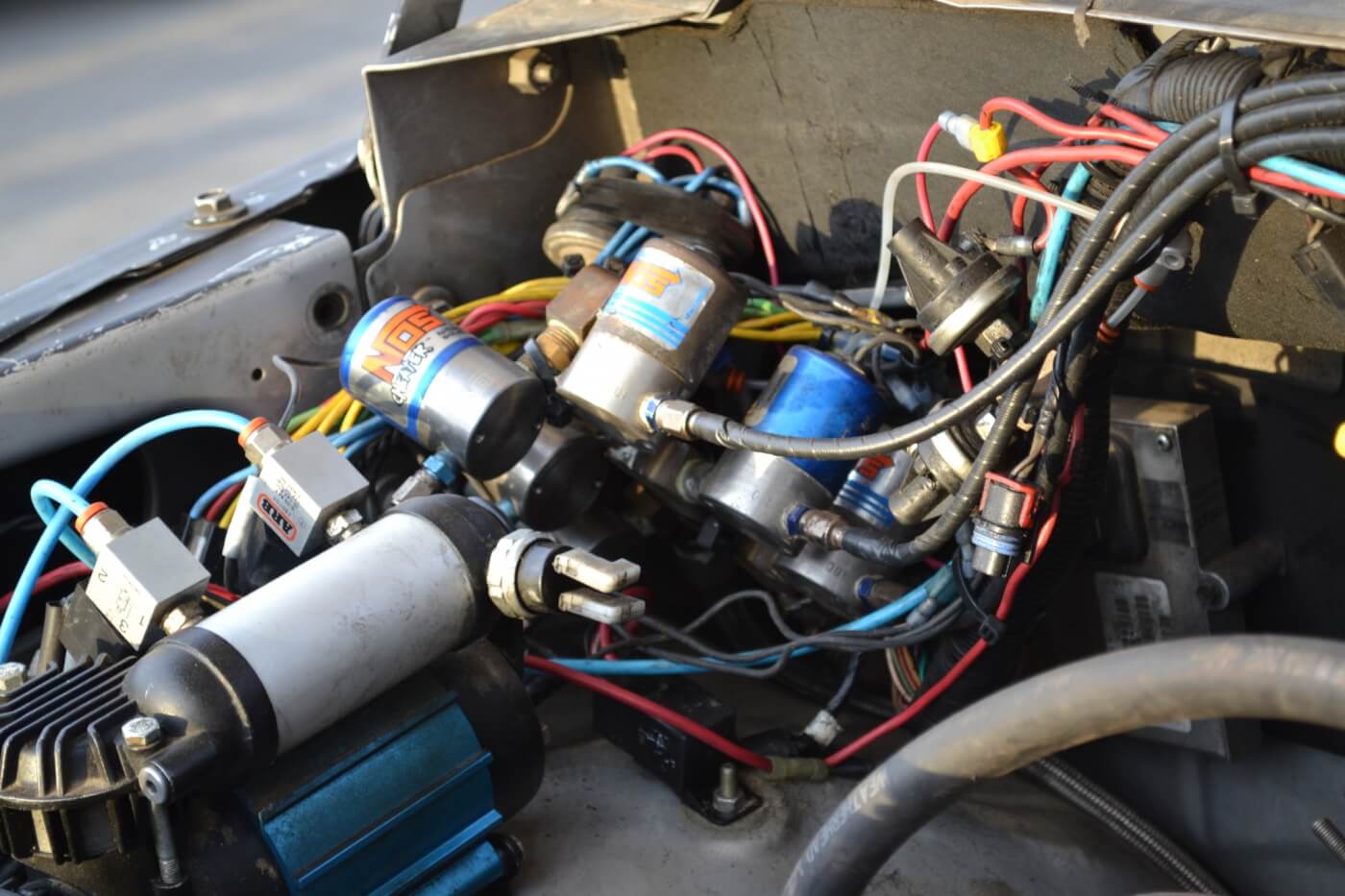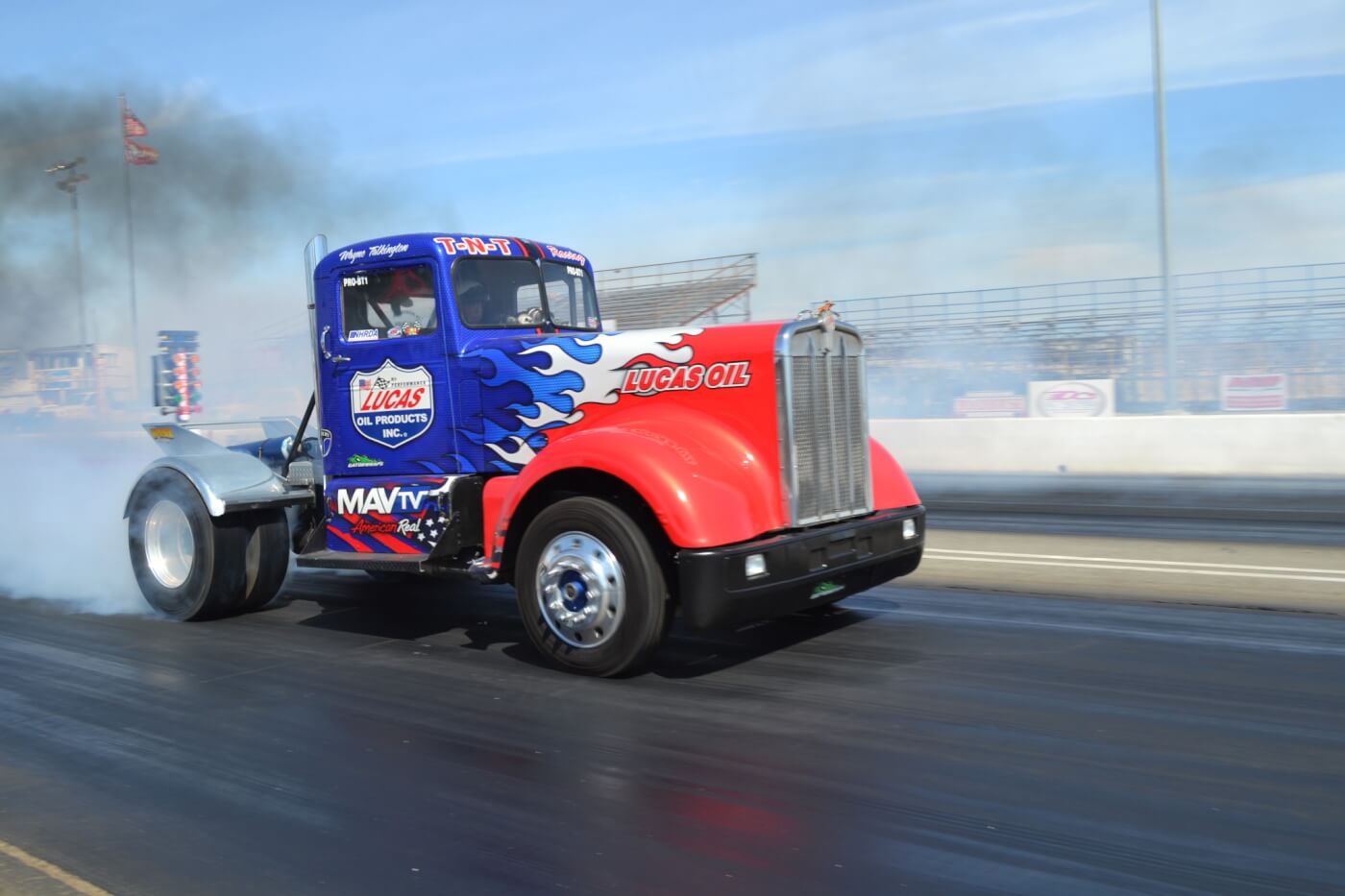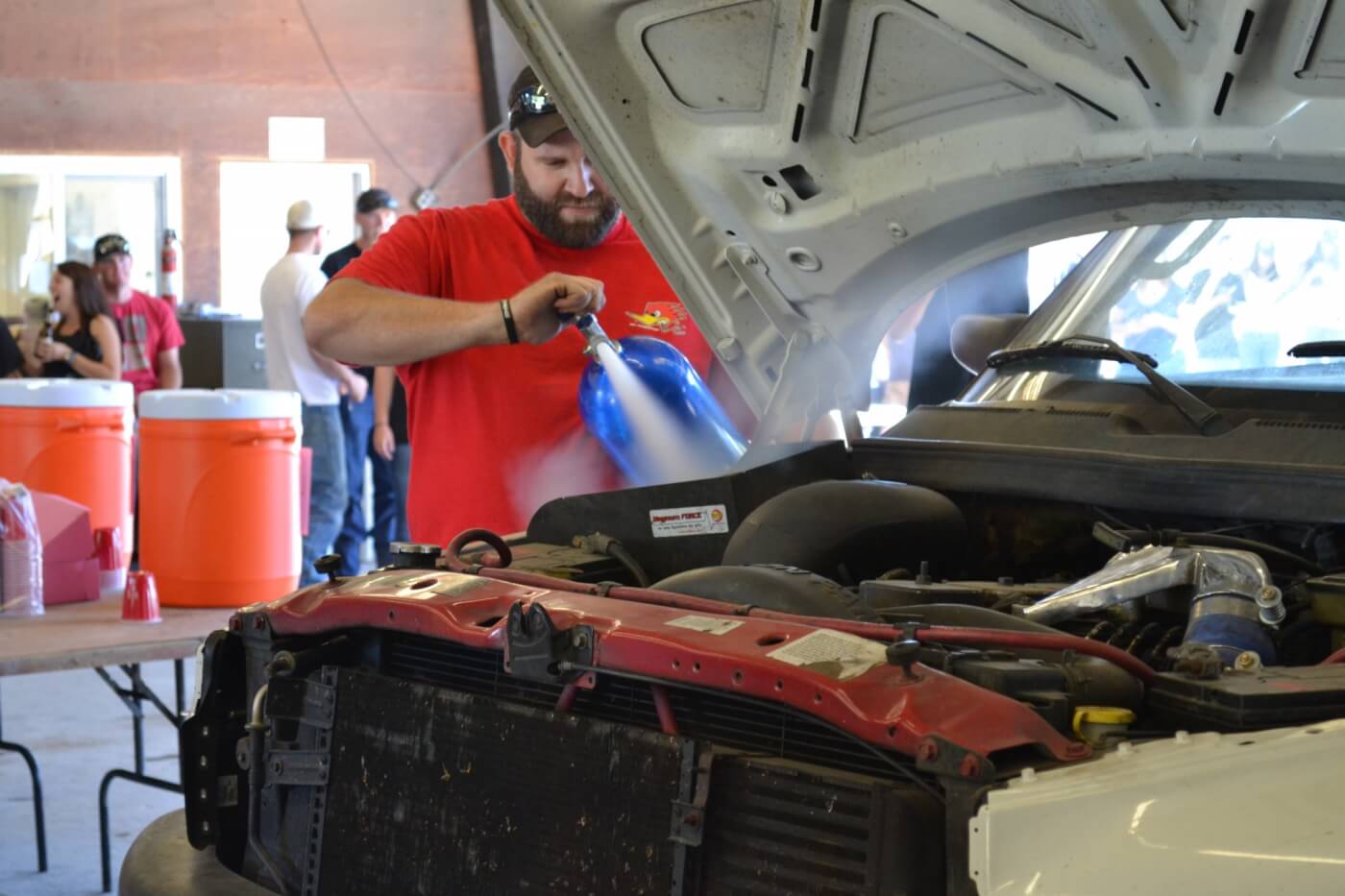Big Power with Nitrous: 300-500hp at the Touch of a Button
There’s perhaps no easier way to make a little extra horsepower than nitrous—but making big power with the bottle takes some doing. On the plus side, a well-planned nitrous system on an engine that’s designed for it can nearly double the engine’s output: we’ve seen an extra 200, 300, or even 500 horsepower added with the use of nitrous oxide. While it may seem scary, nitrous oxide is one of the best ways to extract every last bit of power out of a diesel engine.
The Basics: A Lot of Misconceptions
When talking to regular gas-style hot-rodders, one of the first things they say is, “I didn’t know you could put nitrous on a diesel.” Many people also think nitrous is like propane (it’s not), and that a certain sized jet gives you a certain amount of power (it doesn’t). There are a lot of basic differences when running nitrous on a gas engine versus a diesel, which we’ll talk about here.
The reason that nitrous makes power is that it’s 33 percent oxygen (plus other gases), which is richer than the 21 percent oxygen content of standard breathable air. If we think of an engine as a giant air pump (with fuel added), then it’s clear why nitrous makes power: each revolution of the engine brings more oxygen into the equation with nitrous, so, as long as the correct quantity of fuel is added, the engine will make more power.
In a normal gasoline engine, extra fuel must be injected along with the nitrous in order to maintain an air fuel ratio between 11:1 and 12:1. This is critical because both rich and lean conditions just a few points outside of this range, say 15:1, can cause big time engine damage like melted pistons, burned valves or even scarred cylinder walls.
On the other hand, diesels can operate at an incredibly wide range of air-fuel ratios, although most commonly they’re functioning somewhere within a range of 10:1 and 20:1. In a diesel, injecting nitrous just burns the extra fuel that the engine already has, leading to a power increase. So unlike a gasoline engine, if the engine goes too lean, say past 20:1, there will be no ill effects.
What’s In a “Nitrous Kit”?
Part of the reason that nitrous is such a popular way to add power is because it’s so simple: a basic nitrous kit consists of a bottle, mounting brackets, a feed line, a solenoid, a solenoid-to-nozzle line, a nozzle and an arming switch. That’s really all that’s needed to add about 50-150hp. The reason we give a horsepower range is because how much power the nitrous adds depends on how much extra fuel is on hand. On trucks that are nearly clean, a 0.080 jet might only add 50hp. On trucks with a very rich air-fuel ratio (say 11:1), that same sized jet could add nearly 200hp.
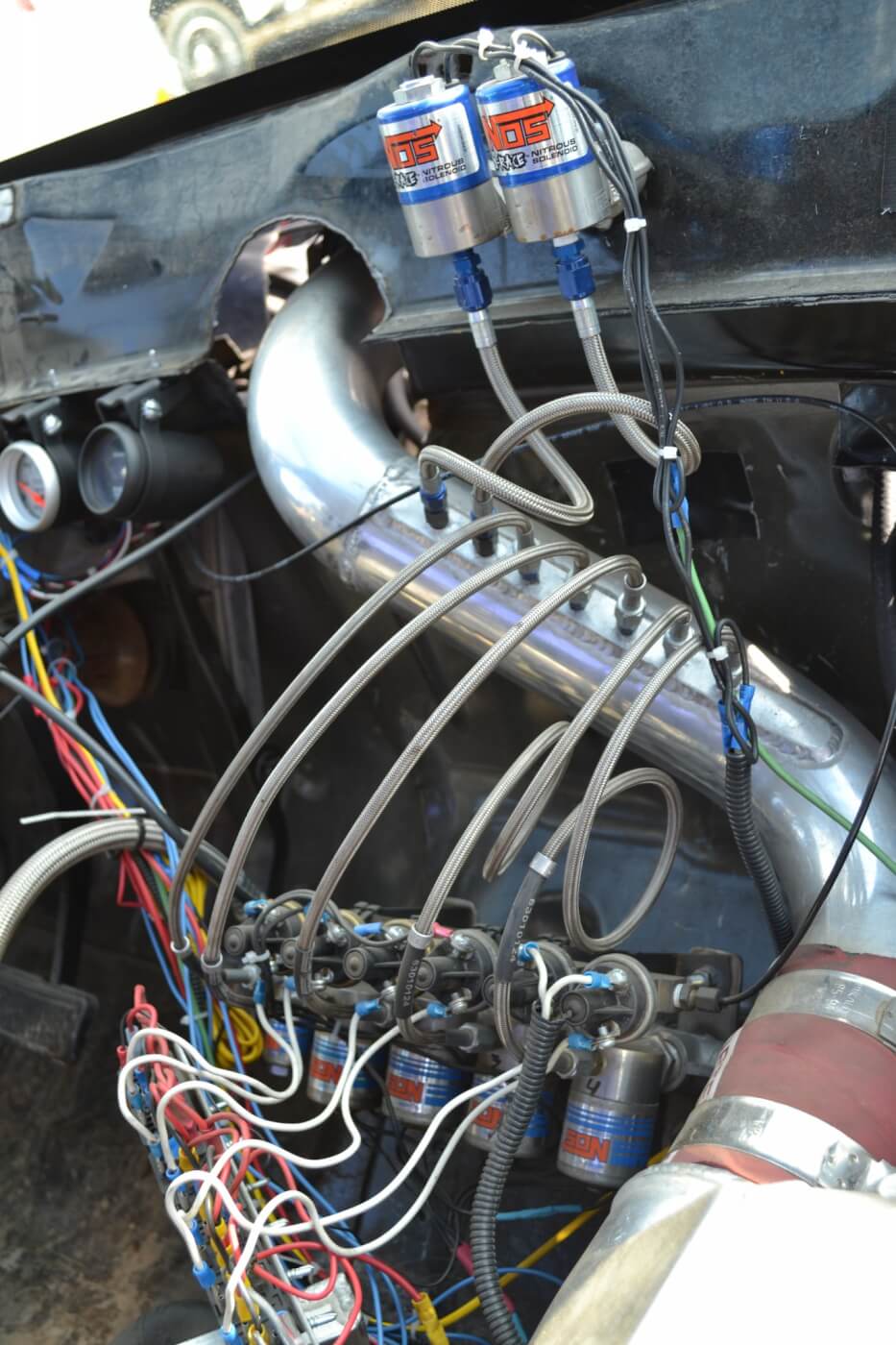
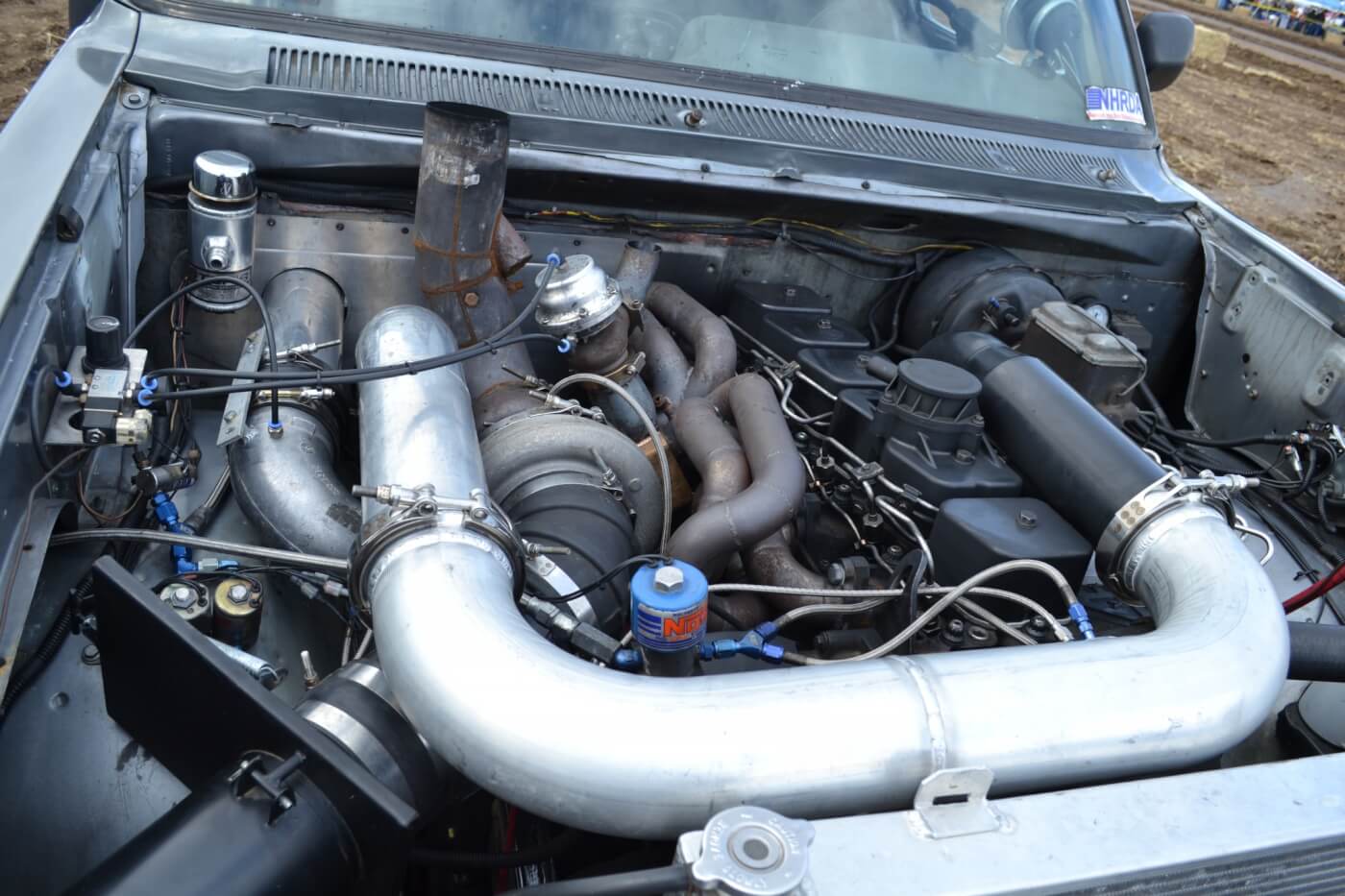
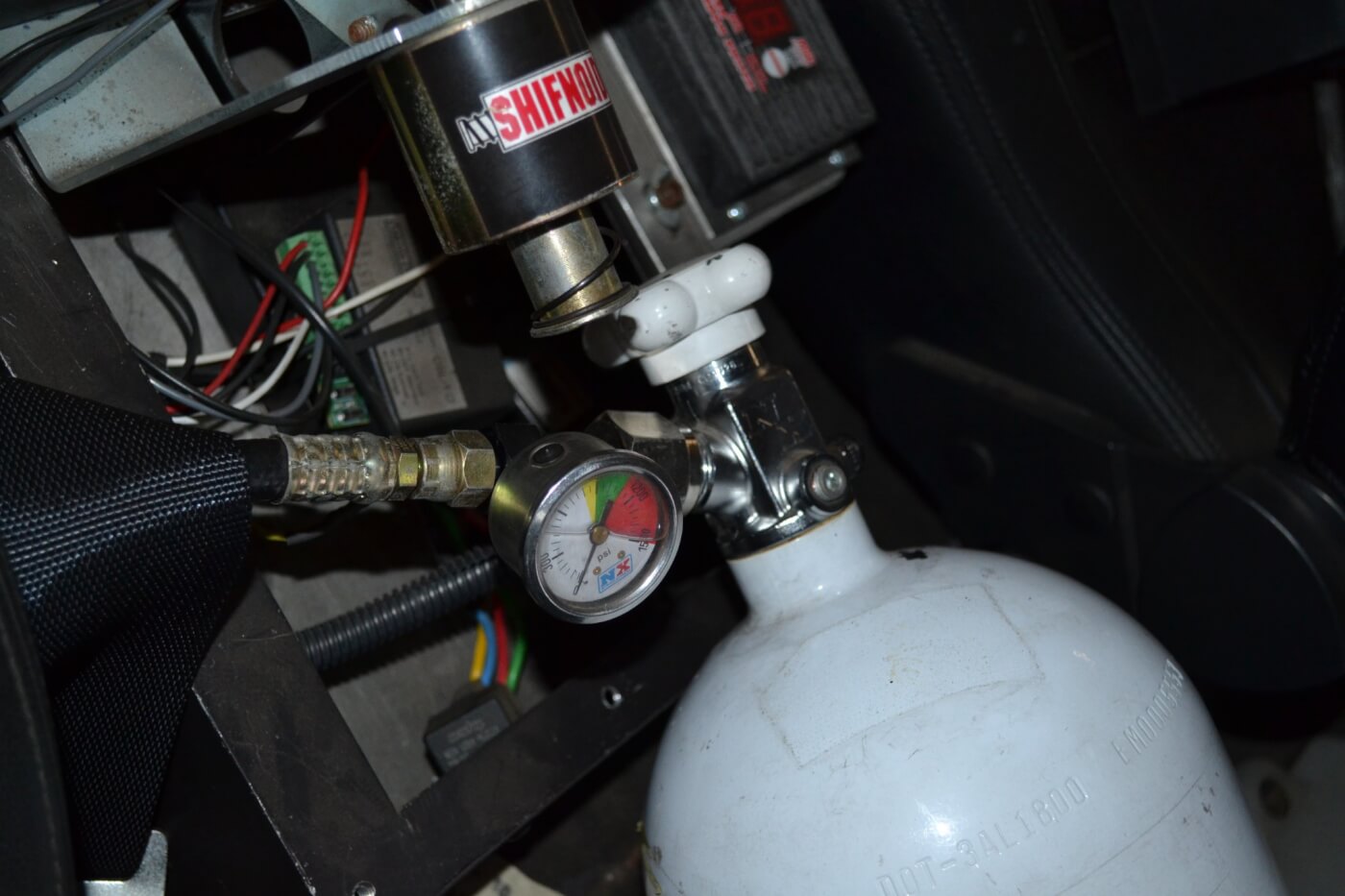
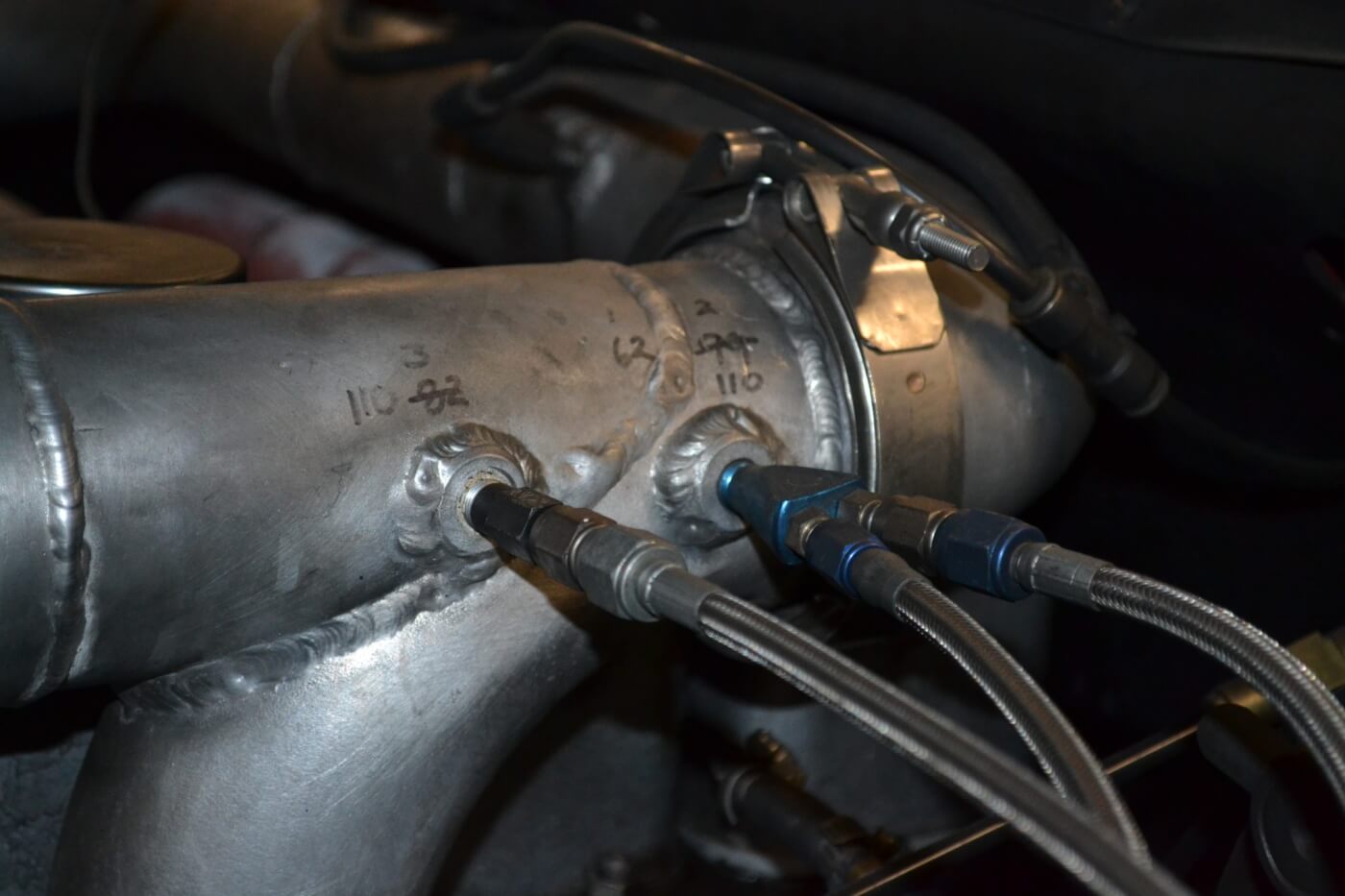
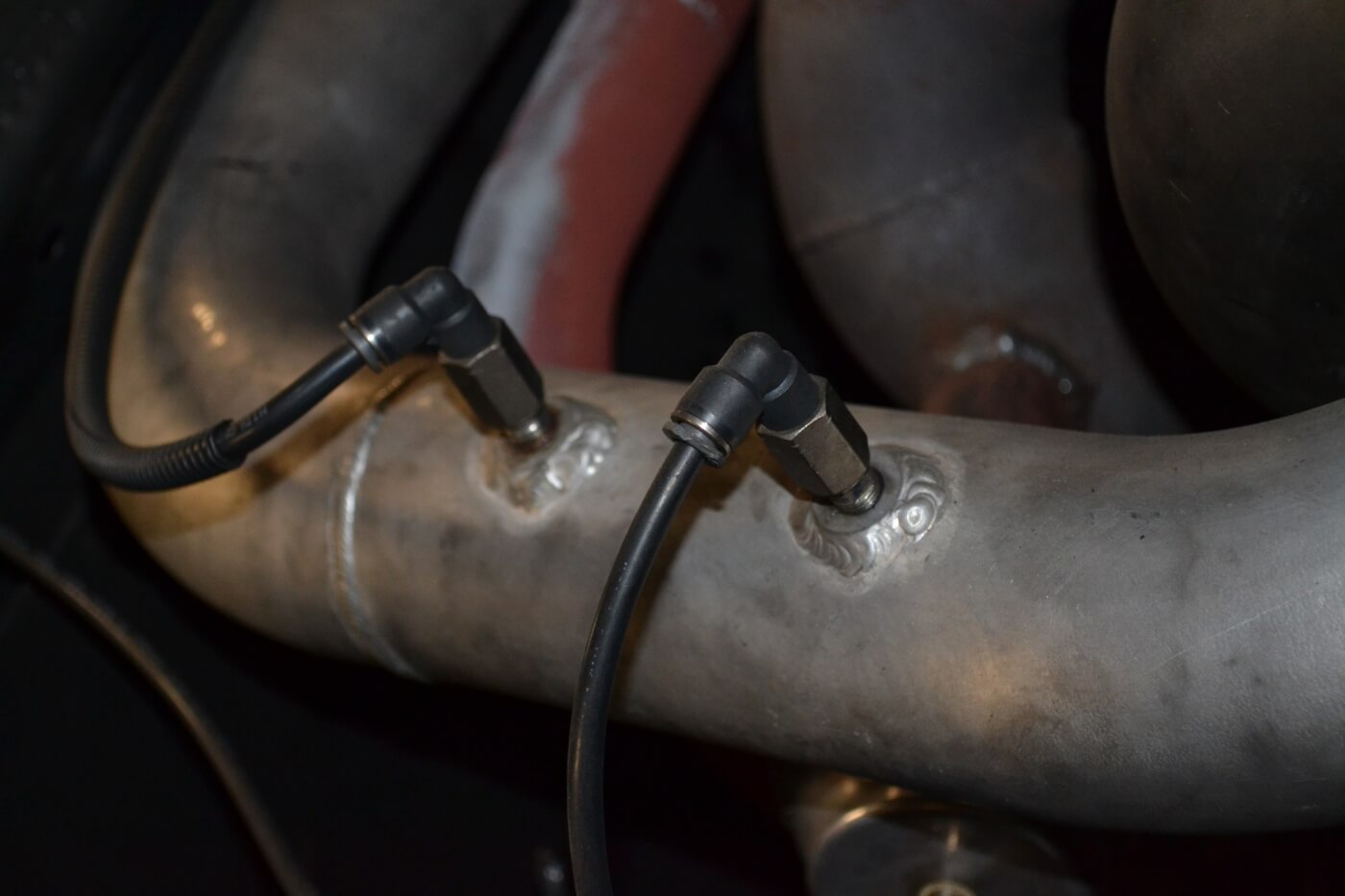
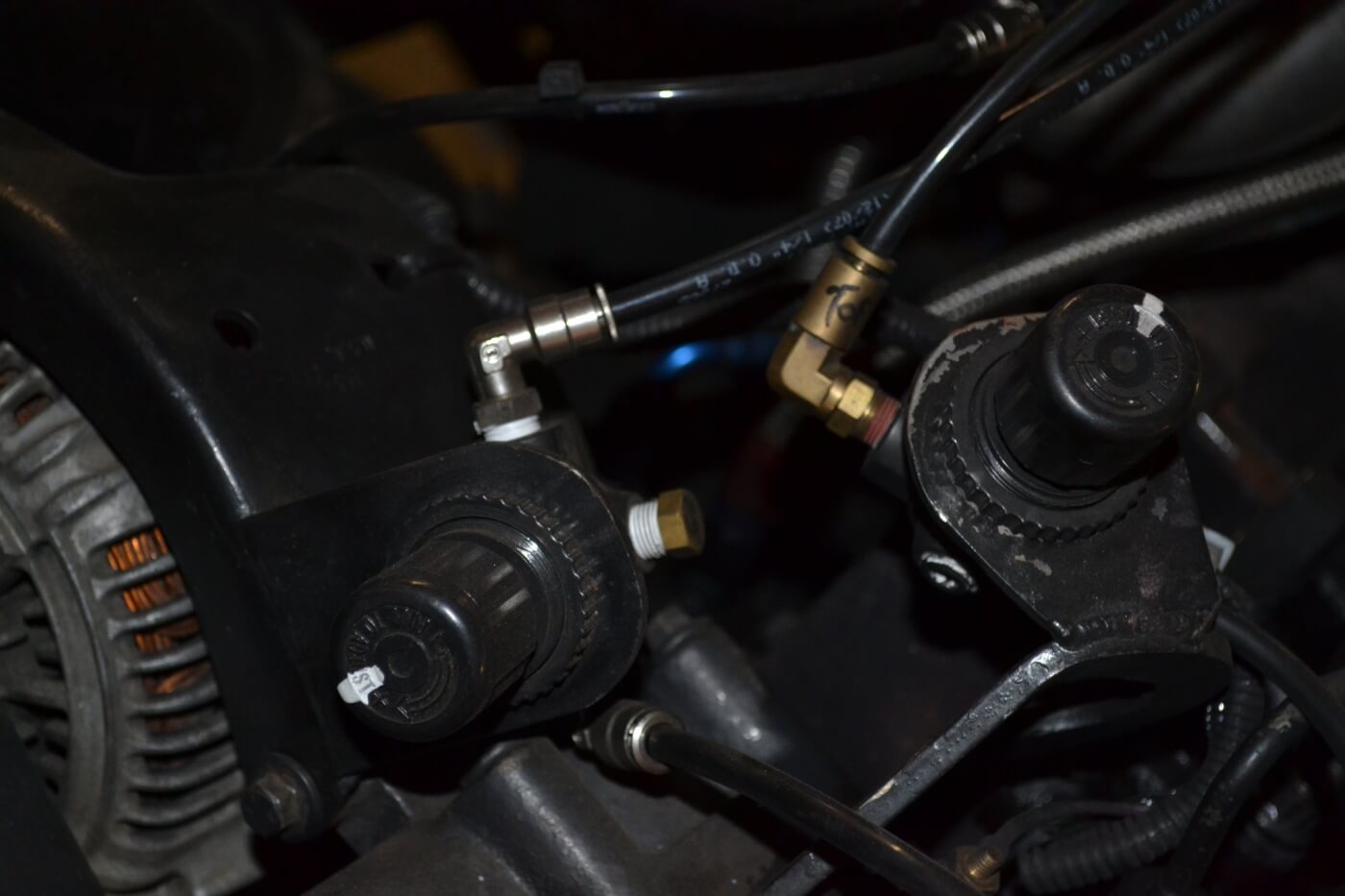
Making Big Power With Nitrous Up-Sizing Everything
So now that you know the basics, we can get into what it takes to make some real horsepower with the juice. Adding 300-500 horsepower gets a little more complex because of the immense amount of nitrous that needs to go into the engine and what occurs within the engine itself. For starters, kits with multiple or oversized bottles, solenoids, and nozzles are almost a must when making large amounts of power, and all the components must be up-sized. A -6 feed line should be used instead of a -4, a .125 orifice solenoid might replace a .080, and 15-pound bottles would take the place of 10-pound bottles.
Jetting & Tuning
One important thing to remember about nitrous jetting is that it’s a situation where 2+2 does not equal 4. That is, two 0.080 jets don’t equal a 0.160 jet. We’re talking about the actual area of the orifice, which can be expressed by the equation pi x radius2. This jetting discrepancy is one of the biggest mistakes that novice enthusiasts make, as three solenoids with 0.080 jets—which is the largest jet most common -3 lines can flow—is actually roughly equal to a single 0.136 jet.
Controls
Hitting a huge shot of spray right off idle is a good way to destroy parts; instead, nitrous must be ramped in as a diesel engine starts to produce boost and power. While a small shot of nitrous can be used to spool a turbo, large hits should be best saved for later in the rpm band and when boost is up above 20psi. The solenoids can be triggered in a variety of ways: either manually, with pressure switches or with controllers like those made by Nitrous Express or Nitrous Oxide Systems. Nitrous can even be controlled by boost levels or set to activate in a certain gear if more advanced controllers are used.
The Many Slangs of Nitrous Oxide
If you hear someone talking about a big power increase, and there are some words in the middle of a sentence you don’t recognize, they’re probably talking about nitrous oxide. In addition to its technical terms, it’s also commonly known by these slang terms: juice, squeeze, spray, bottle, kits, guns, NOS (pronounced “naws”), N2O, giggle gas, hose, drugs, button, unit.
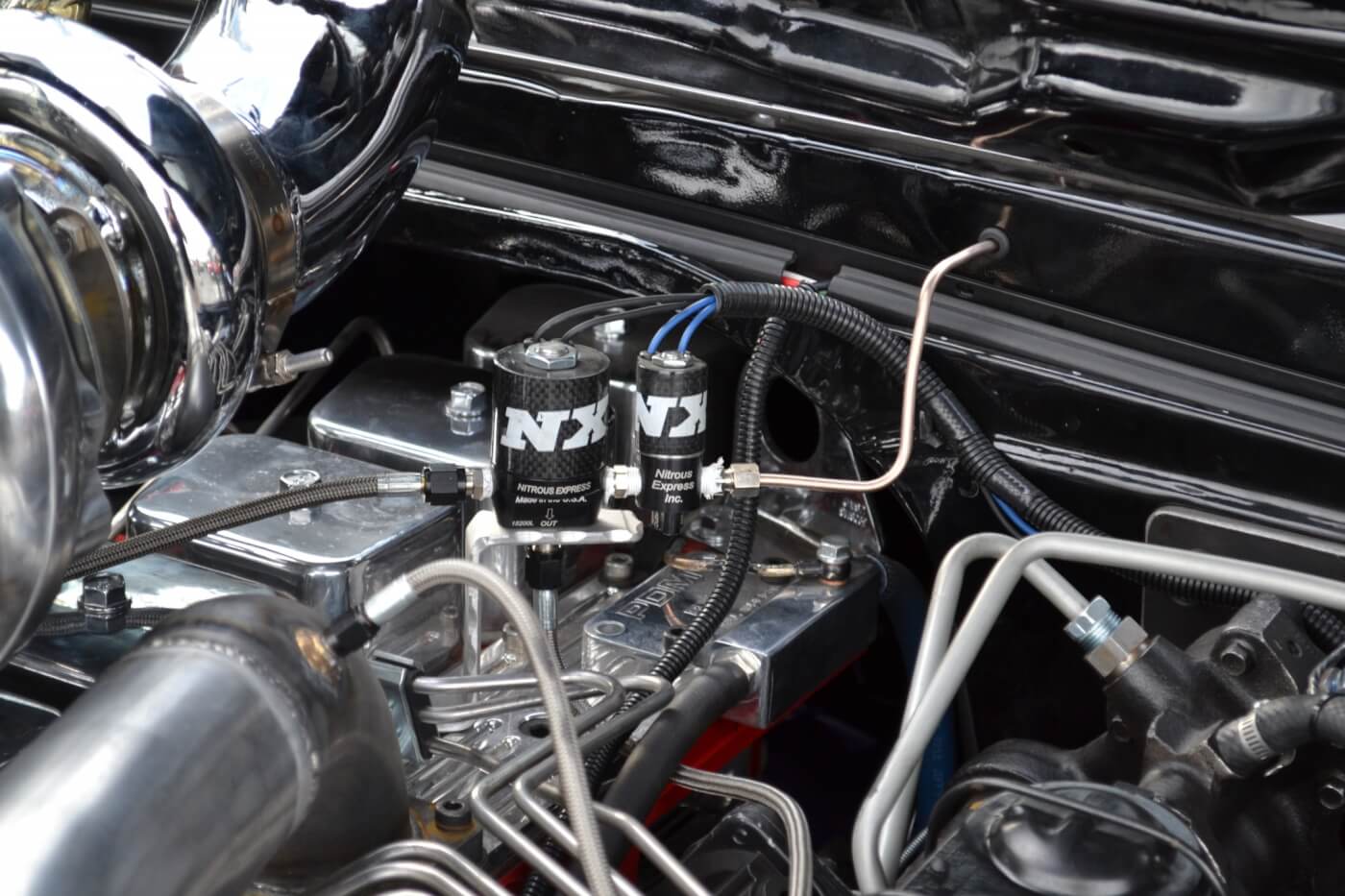
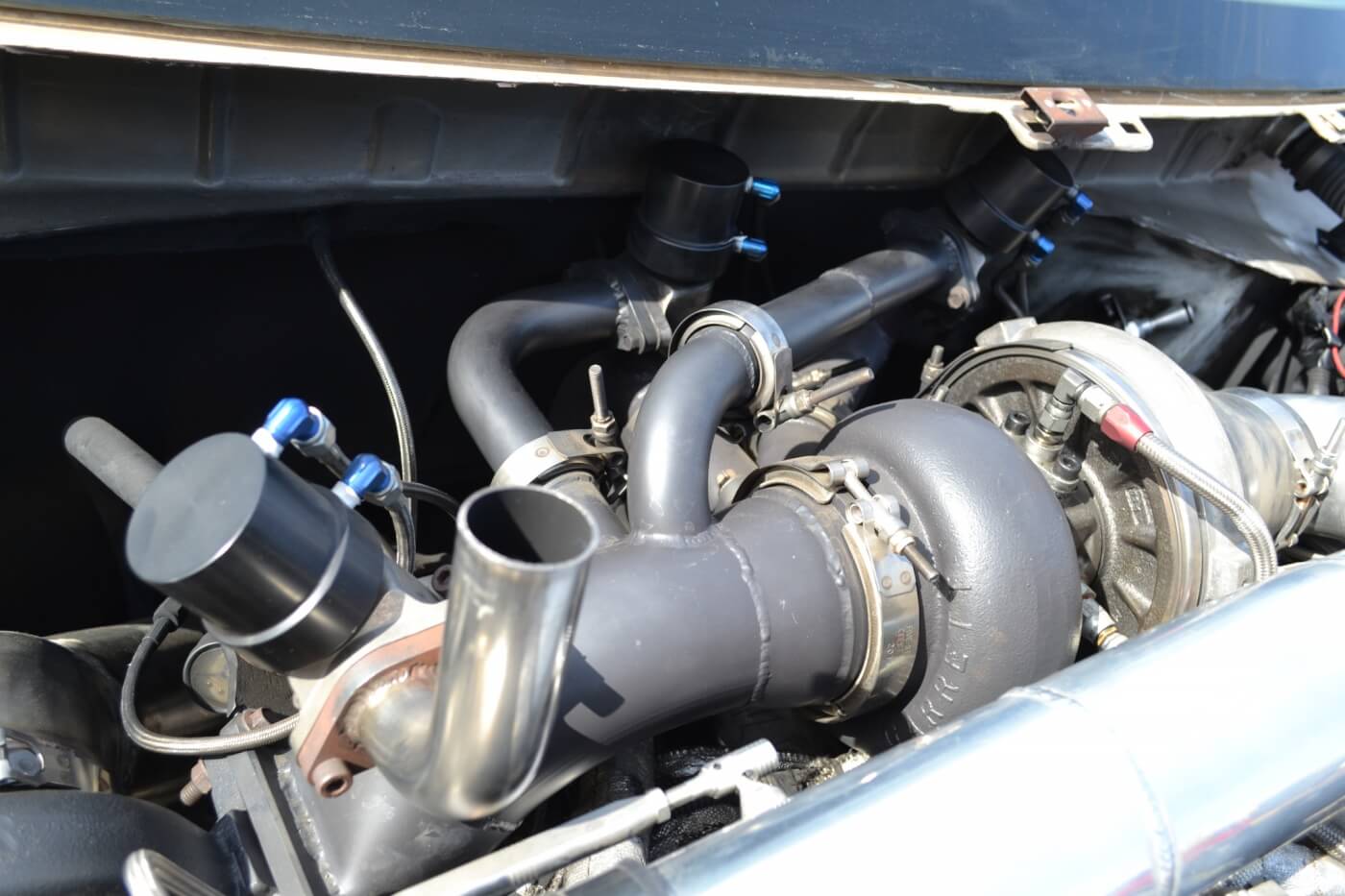
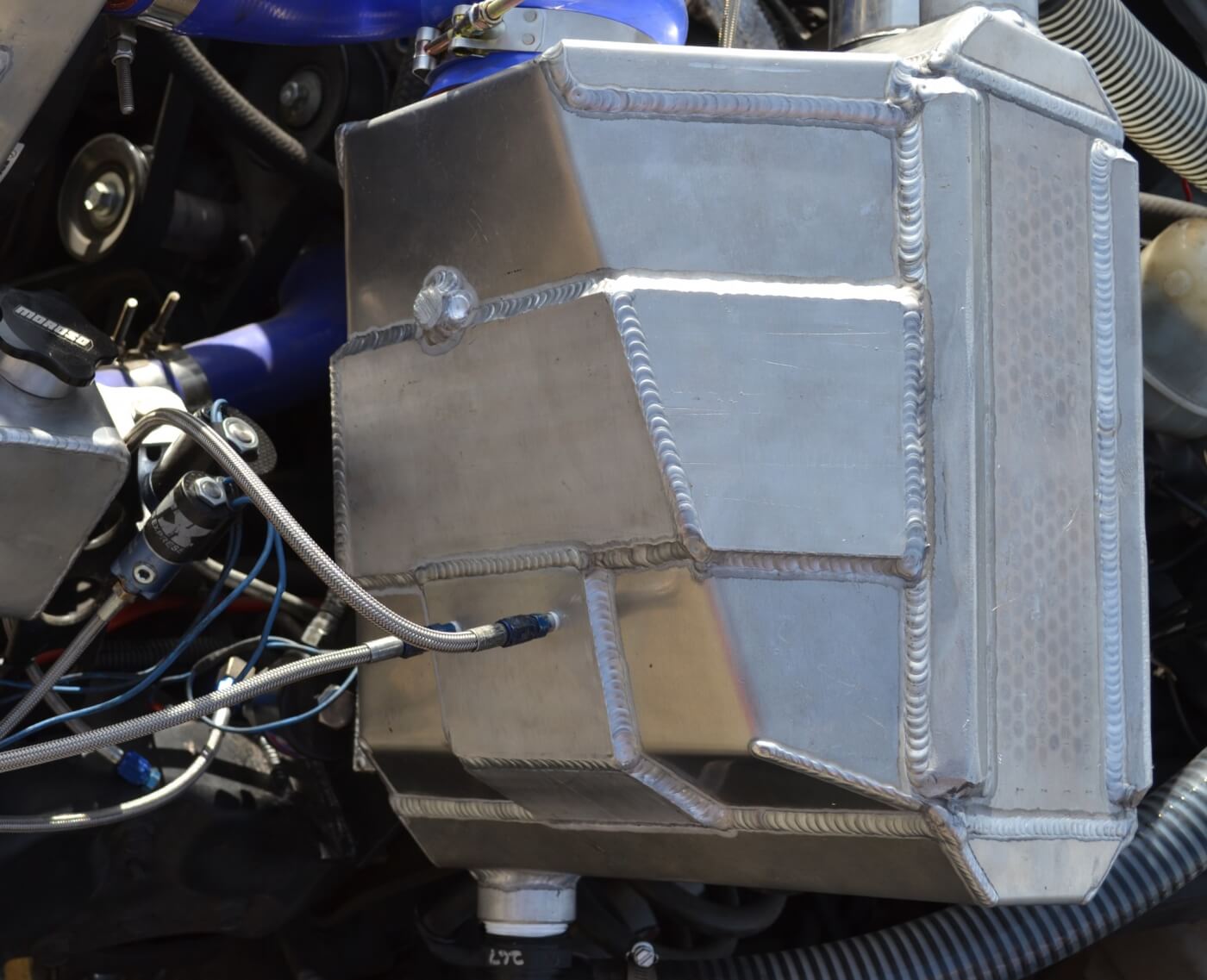
Damage Control
While nitrous can be one of the most satisfying ways of producing power, it can also be one of the most dangerous. From excess or improper nitrous use we’ve seen melted pistons and turbocharger turbines, exploded compressor wheels and intake piping—even bent connecting rods.
To prevent damages, when running a big shot, the turbocharger must be heavily wastegated in order to prevent overspeeding—running an external wastegate is a good idea, but running both internal and external gates is an even better one. Furthermore, keeping EGT well in check with water-to-air intercooling or water injection is also recommended. Lastly, we suggest never triggering a large shot of nitrous below 20-30psi of boost, as a large backfire can occur.
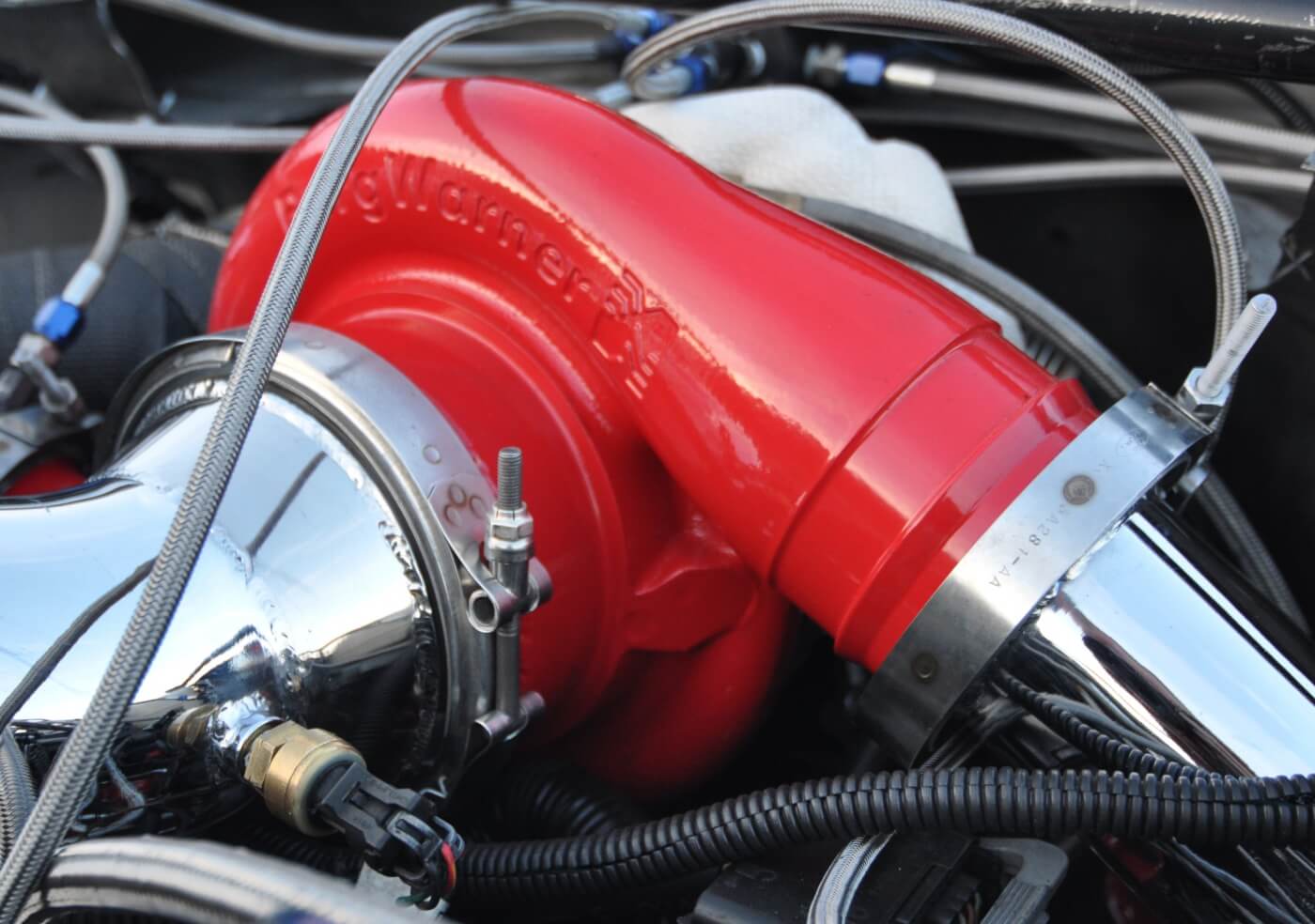
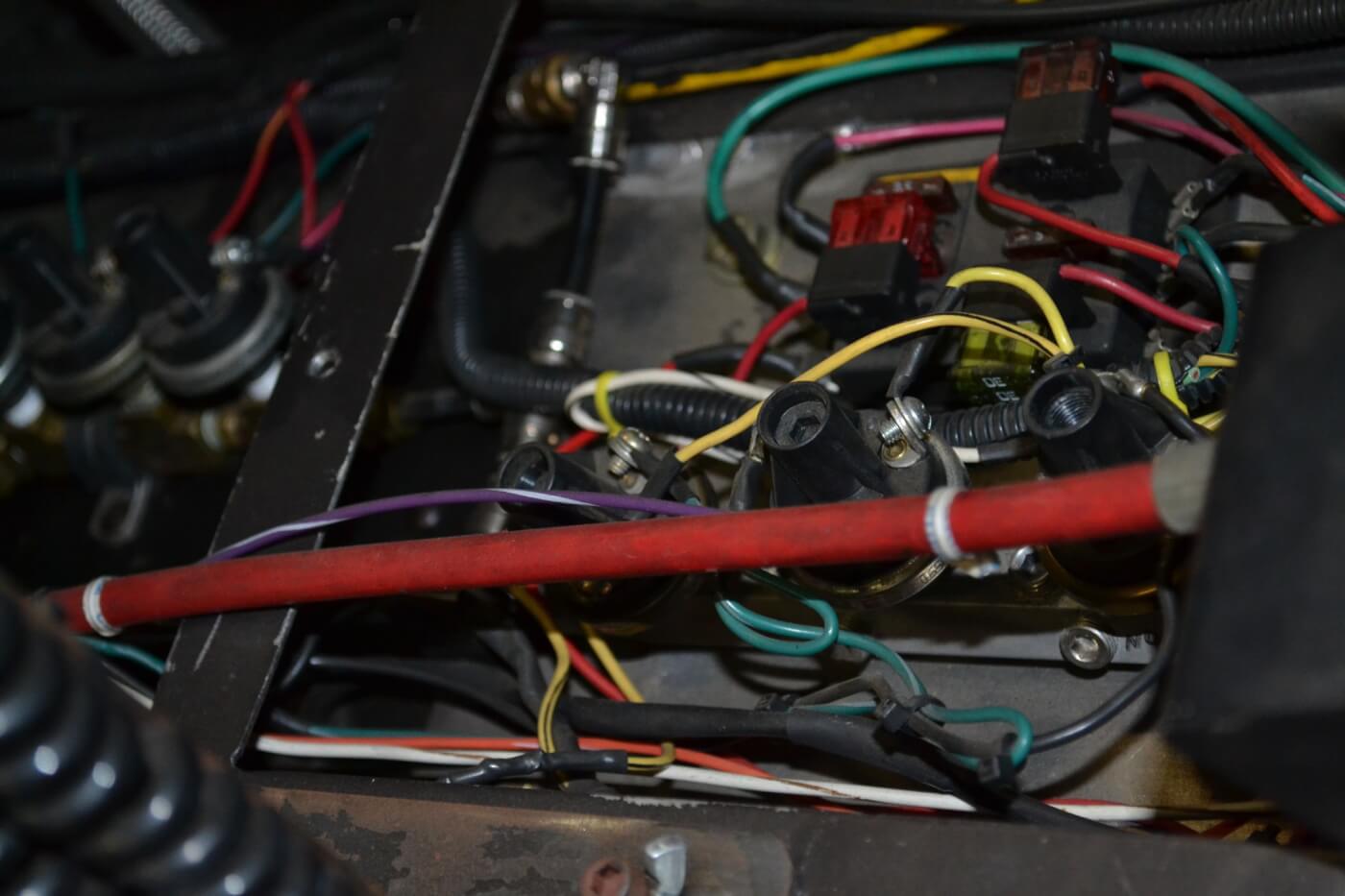
Final Thoughts
While “fuel-only” purists may scoff at nitrous oxide, it’s an inexpensive way to make an additional 50-200hp. Beyond that range—and into the 300-500hp range—an engine must be built specifically with nitrous in mind, with stronger parts and more advanced controls to keep problems at a minimum. As more and more diesel racers experiment with nitrous, our knowledge base will increase, and hey, who knows: a dependable 500-1,000hp shot may be just around the corner. DW
